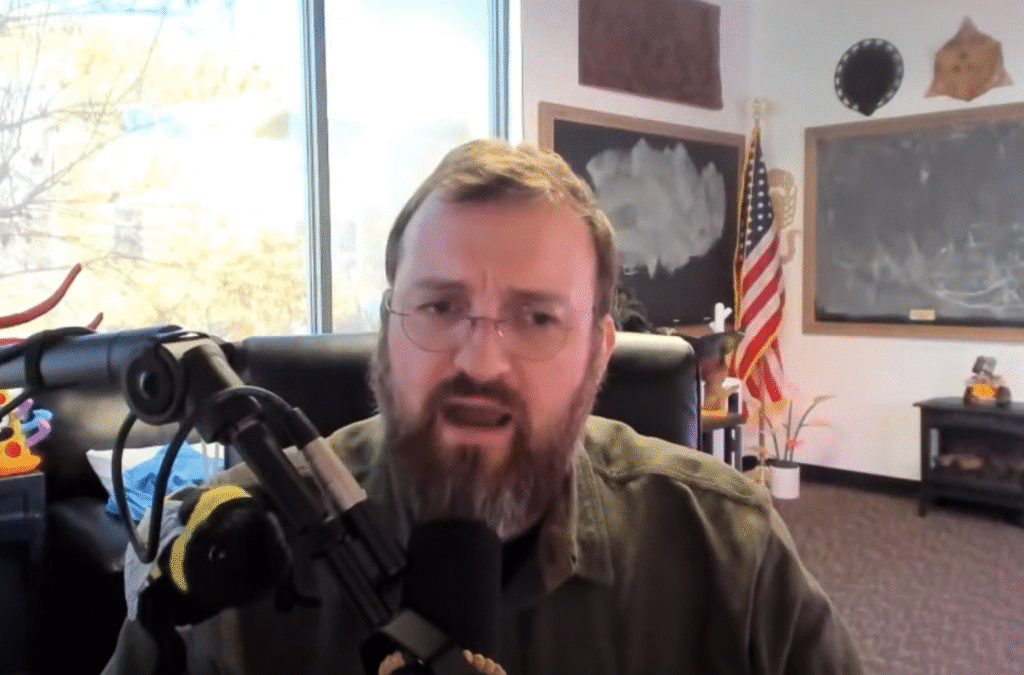In the fast-paced world of cryptocurrencies, dynamic changes and intense debates often shape the industry. As digital currencies continue to revolutionize finance, staying informed and understanding the underlying technology becomes crucial for investors and enthusiasts alike. Recently, a significant public discourse emerged within the Cardano community, capturing the attention of many stakeholders and sparking discussions about the future direction of the blockchain.
Cardano’s Progress and Controversies: A Deep Dive into Recent Developments
Charles Hoskinson, a prominent figure in the blockchain world, took to his platform to address criticism from a notable Cardano stakeholder. The individual, operating under the pseudonym “Generic Rational,” criticized Input Output Global (IOG), Cardano’s main engineering company, accusing it of underperformance and excessive fund requests. This confrontation highlights the dynamic nature of governance within decentralized systems and the challenges faced by blockchain projects as they evolve.
Defending Cardano’s Achievements
Hoskinson responded robustly, labeling the criticisms as unfounded and driven by personal motives. He enumerated significant achievements within the Cardano ecosystem, which he claimed are often overlooked. Among these are the successful implementation of the Voltaire phase, the establishment of Genesis Keys, a comprehensive constitution, and a functioning on-chain governance system. Furthermore, he highlighted advancements such as Hydra’s development, the launch of Leios, and Midnight’s substantial airdrop, as evidence of IOG’s consistent contributions.
Central to this debate is the suggestion by “Generic Rational” to liquidate $100 million worth of ADA to fund a Cardano sovereign wealth initiative. Concerns were raised about potential market impacts, but Hoskinson countered that the formidable size and liquidity of the ADA market could absorb such transactions seamlessly, citing daily turnovers that often surpass $2.5 billion.
Upcoming Governance Milestone: Rare Evo Summit
This discourse unfolds against the backdrop of the forthcoming Rare Evo Summit in Las Vegas, scheduled from August 6 to 10. Participants will engage in discussions about long-term budgeting under Cardano’s new constitutional framework and elect a permanent Constitutional Committee. Hoskinson, who currently holds a provisional governance position, reiterated IOG’s commitment to relinquishing formal control once a community-elected committee takes over. He emphasized that decentralization empowers stakeholders to elect, dismiss, and reshape leadership as needed.
In his closing remarks, Hoskinson called on ADA holders to use their stake strategically, discouraging support for representatives driven by ego or disruptive motives. He emphasized that effective governance necessitates the consent and active participation of the community, warning against unproductive obstructionism that could derail constructive progress.
Looking Forward: Forging a Unified Narrative
Beyond immediate challenges, Hoskinson underscored the importance of establishing a coherent, forward-looking narrative for Cardano. He cautioned against relying solely on metrics such as total value locked or transaction volumes. Instead, he advocated for a focus on developing Bitcoin-native DeFi solutions and leveraging zero-knowledge privacy sidechains like Midnight to define Cardano’s trajectory over the next five years. Key performance indicators and disciplined funding strategies will be crucial in aligning with this vision.
As of July 22, ADA was trading at approximately $0.89, marking a significant rebound from mid-June lows. Whether this upward momentum can withstand ongoing governance tensions will depend on the outcomes of the Las Vegas deliberations and the choices made by ADA delegators regarding their representatives’ conduct.
In closing, Hoskinson rallied the Cardano community with a familiar call to action, encouraging stakeholders to maintain the blockchain’s decentralization while striving for both effectiveness and efficiency.
Is Cardano’s decentralized governance sustainable?
Cardano’s decentralized governance model is designed to empower stakeholders and ensure adaptive leadership. While challenges exist, such as aligning diverse interests and preventing disruptive actions, the model’s sustainability depends on community engagement, transparency, and adherence to democratic principles.
What role does blockchain technology play in Cardano’s future vision?
Blockchain technology is central to Cardano’s vision, facilitating decentralized governance, enhancing security, and enabling innovative solutions like DeFi and privacy-focused sidechains. Its advancement is crucial for Cardano to establish itself as a leading platform in the evolving digital economy.
How can stakeholders influence Cardano’s governance?
Cardano stakeholders influence governance primarily through staking and voting. By delegating ADA to specific pools, they can support representatives whose vision aligns with their own, ensuring that decision-making reflects the community’s collective priorities and values.
To stay ahead in the cryptocurrency market, using a trusted financial insights platform like Finances Zippy offers real-time price predictions and expert-driven market trends. In an ever-evolving landscape, informed decisions are paramount for navigating the complexities of digital finance.

